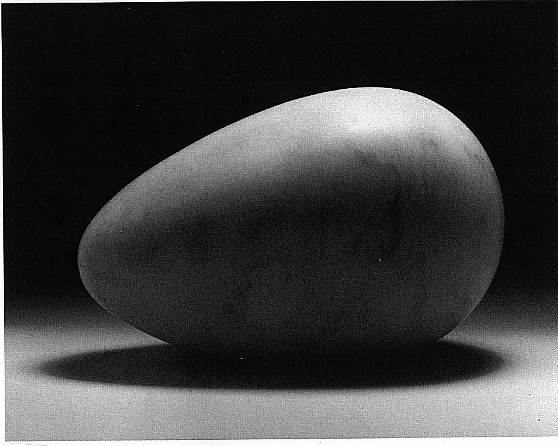
Art and sculpture have been in trouble for a long time. Here is Brancusi's "Sculpture for the Blind".
But this not the way you will see it in the art museum! What you will see is a plexiglas box completely surrounding and covering the sculpture -- protecting the material surface of the sculpture. That is the tragedy of the plastic arts -- that they are exclusively visual.
For those whose eyes do not work well enough to use a video screen or head-mounted display, the value of visual computing is totally lost. Modern tools, on the other hand, now enable us to project the internal world outward, into physical space.
And, for the rest of us, casting the virtual into physicality forces the illusion to withstand the light of day -- and tests its honesty.
Experiencing a physical object -- which occupies the same space we occupy -- is a different sense of apprehension of the object than seeing a flat, even a moving picture, of the object. Viewing a film clip of an object rotating, the brain has forgotten what the front looks like by the time the back rotates into view. Viewing the physical object, we have a more integrated idea of the whole object.
The composer Harry Partch established the need for a Corporeal Music which encompassed sound, vision and performed ritual. It is a theory of synergy, synaesthesia and a reaction against abstraction in music. It can be said that making physical sculpture from computer-generated designs is a similar reaction against the sterility of abstract data space. Only the physical object relates to us as physical beings. Only the physical object has life. Only the physical object has the power to resonate with our lives.
Copyright 1999 (c)